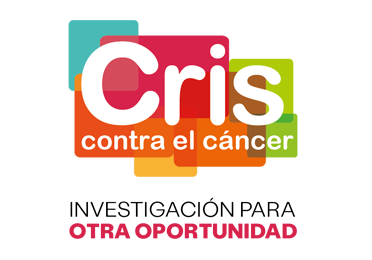
Co-authored by Ana Vivancos, Principal Investigator of VHIO’s Cancer Genomics Group, and VHIO’s Director Josep Tabernero, a News & Views article published in Nature Medicine (1) informs readers about the results of an international cohort study of patients with metastatic non-small cell lung cancer (NSCLC) undergoing plasma circulating tumor (ctDNA) sequencing with longitudinal follow-up for survival.
Led by Justin Jee and Bob T. Li, Memorial Sloan Kettering Cancer Center (NY, USA), this study is the largest prospective cohort conducted to date in this patient population and was designed to establish the utility of ctDNA as a genomic biomarker to help guide treatment decision making as well as explore its association with and impact on survival. Published in the same issue of the journal (2), results not only validate the clinical utility of liquid biopsy in informing predictive biomarkers in NSCLC, but also suggest that the detection of ctDNA itself could also be of prognostic value.
In their corresponding News & Views article, Ana Vivancos and Josep Tabernero update on the current clinical scenario for the application of liquid biopsy in advanced disease and how it continues to step up as a valuable resource for determining predictive biomarkers in patients with advanced NSCLC. Providing expert comment on the data reported by Jee et al. (2), they also highlight the potential value of negative ctDNA testing as well as other important aspects including the categorization of non-ctDNA shedding and shedding tumors.
“We are increasingly witnessing the potential of liquid biopsy ctDNA analysis in precision oncology. Further supporting the clinical value of this less invasive approach for tumor tissue sampling, this present study now points to ctDNA as a novel prognostic indicator,” says Ana Vivancos, co-author of this News & Views.
“Blood-based ctDNA analysis for predictive testing and prognosis in patients with advanced disease is showing real promise. While results of this present study represent an important step in determining the influence of ctDNA on overall survival, further studies will be required to establish its true prognostic value in patients with advanced or recurrent NSCLC,” adds co-author Josep Tabernero, Head of the Medical Oncology Department at the Vall d’Hebron University Hospital and VHIO’s Director.
Signposting future directions for liquid biopsy, our co-authors end with a checklist of important questions that will need to be addressed by further advancing insights into the clinical and biological mechanisms underlying ctDNA dynamics.
###
References:
1) Vivancos A, Tabernero J. Circulating tumor DNA as a novel prognostic indicator. Nat Med. 2022 Nov 10. doi: 10.1038/s41591-022-02068-8. Epub ahead of print. PMID: 36357679.
2) Jee J, Lebow ES, Yeh R, Das JP, Namakydoust A, Paik PK, Chaft JE, Jayakumaran G, Rose Brannon A, Benayed R, Zehir A, Donoghue M, Schultz N, Chakravarty D, Kundra R, Madupuri R, Murciano-Goroff YR, Tu HY, Xu CR, Martinez A, Wilhelm C, Galle J, Daly B, Yu HA, Offin M, Hellmann MD, Lito P, Arbour KC, Zauderer MG, Kris MG, Ng KK, Eng J, Preeshagul I, Victoria Lai W, Fiore JJ, Iqbal A, Molena D, Rocco G, Park BJ, Lim LP, Li M, Tong-Li C, De Silva M, Chan DL, Diakos CI, Itchins M, Clarke S, Pavlakis N, Lee A, Rekhtman N, Chang J, Travis WD, Riely GJ, Solit DB, Gonen M, Rusch VW, Rimner A, Gomez D, Drilon A, Scher HI, Shah SP, Berger MF, Arcila ME, Ladanyi M, Levine RL, Shen R, Razavi P, Reis-Filho JS, Jones DR, Rudin CM, Isbell JM, Li BT. Overall survival with circulating tumor DNA-guided therapy in advanced non-small-cell lung cancer. Nat Med. 2022 Nov 10. doi: 10.1038/s41591-022-02047-z. Epub ahead of print. PMID: 36357680.


























